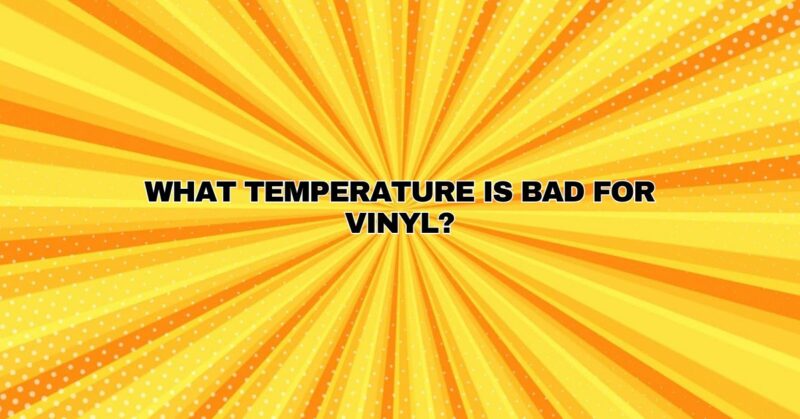Vinyl records, cherished for their analog warmth and nostalgic allure, have a devoted following among audiophiles and music enthusiasts. However, these delicate musical artifacts are not impervious to environmental factors, including temperature. In this article, we will explore the effects of both high and low temperatures on vinyl records, helping collectors and music lovers understand the importance of proper storage and care to preserve their cherished vinyl collections.
The Composition of Vinyl Records
To understand the potential impact of temperature on vinyl records, it’s essential to grasp the materials used in their construction. Vinyl records are primarily made of polyvinyl chloride (PVC), a resilient plastic material. While PVC is known for its durability, it is sensitive to extreme temperatures.
The Impact of High Temperatures
High temperatures can be detrimental to vinyl records in several ways:
- Warping: The most common and noticeable effect of high temperatures is record warping. When exposed to heat, PVC softens, causing records to warp or curl. Warped records are no longer flat and cannot track properly on a turntable, leading to tracking issues and audio distortion.
- Groove Distortion: Excessive heat can lead to groove distortion, affecting the shape and depth of the grooves on the record’s surface. Groove distortion can result in playback problems, including skips and jumps.
- Increased Susceptibility to Damage: Heat-damaged records are more susceptible to physical damage, such as cracks, fractures, and chipping. These types of damage can render a record unplayable.
- Label Peeling: Prolonged exposure to high temperatures can cause the adhesive holding the record label to deteriorate, leading to label peeling or detachment.
- Vinyl Softening: In extreme cases, heat can soften the vinyl material to the point where it becomes sticky and difficult to handle.
The Impact of Low Temperatures
Low temperatures can also pose risks to vinyl records:
- Brittleness: When vinyl records are exposed to cold temperatures, the PVC material becomes more brittle. This increased brittleness can make records prone to cracks and fractures, particularly if they are subjected to physical stress.
- Reduced Flexibility: Cold vinyl becomes less flexible, increasing the likelihood of damage during handling or playback. Records may become more susceptible to breaking or shattering when subjected to mechanical stress.
The Ideal Temperature for Vinyl Storage
The ideal temperature for storing vinyl records falls within a relatively narrow range:
- Temperature Range: Vinyl records are best stored in a cool, stable environment with temperatures between 60°F and 70°F (15°C to 24°C).
Maintaining a consistent temperature within this range is crucial to ensure the longevity and playback quality of your vinyl collection.
Protecting Vinyl Records from Temperature Extremes
To safeguard your vinyl collection from temperature extremes, consider the following practices:
- Controlled Storage Environment: Store your vinyl records in a temperature-controlled environment that remains stable throughout the year. Avoid locations prone to temperature fluctuations, such as attics, garages, and basements.
- Avoid Direct Sunlight: Keep records away from direct sunlight, as the heat generated by sunlight can significantly increase the temperature in the storage area.
- Use Outer Sleeves: Employ protective outer sleeves or polypropylene record jackets to shield your record covers from temperature variations and potential label damage.
- Insulate Storage Shelves: Insulate the storage shelves where you keep your records to help maintain a stable temperature. Dedicated record storage furniture often provides insulation benefits.
- Transport with Care: When moving or transporting vinyl records in extreme temperatures, take extra precautions to protect them from sudden temperature changes and mechanical stress.
Conclusion
Proper temperature management is essential for preserving the quality and lifespan of vinyl records. Excessive heat can cause warping, groove distortion, and physical damage, while extreme cold can make records brittle and more prone to breakage. By following best practices for vinyl record storage and handling, you can ensure that your cherished vinyl collection remains in excellent condition, ready to deliver its analog warmth and timeless music for years to come.


